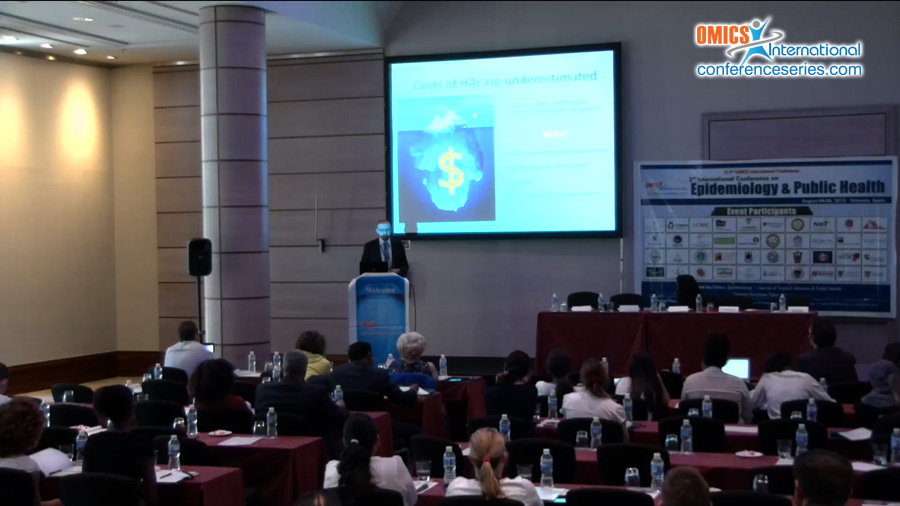
Gabriele Messina
University of Siena, Italy
Title: Use of a fluorescent marker for assessing hospital cleanliness
Biography
Biography: Gabriele Messina
Abstract
Background: Hospital cleaning practices and methods for their assessment are important for healthcare-associated infections prevention. Aims of the study were: i) to assess the daily cleaning procedures of different surfaces in hospital bathrooms with a fluorescent marker, ii) to study correlations between results obtained by this method and microbial contamination. Methods: We enrolled 44 bathrooms of six hospital wards (A, B and C medical; D, E and F surgical) in which we analysed 218 surfaces (basin, toilet seat, flush button, inside door handle, light switch and floor). We applied a UV-fluorescent marker to these surfaces and the following day we assigned a score according how completely the marker had been removed. On the floor of each bathroom we also placed Petri dishes to assess bacterial colony forming units (CFU). The Wilcoxon test was used for comparisons between wards, Fisher’s exact test for removal scores comparisons between different objects, Spearman’s coefficient for correlations between CFU score and marker removal score. Results: Ward F proved to be less clean than wards A, B and E (p<0.05). Medical units were cleaner than surgical ones (p=0.0016). Basins were cleaner than the other surfaces (p<0.05), toilet seats were dirtier than floors (p=0.048) and door handles (p=0.013). CFU score and mark removal score did not seem to be correlated. Conclusions: The UV marker proved to be a practical and effective method for checking cleaning procedures. An early identification of inadequate cleaning practices allows the repetition of them until good hygiene standard are reached. UV marker could replace visual inspection, in a multistep process later including quantitative methods.


